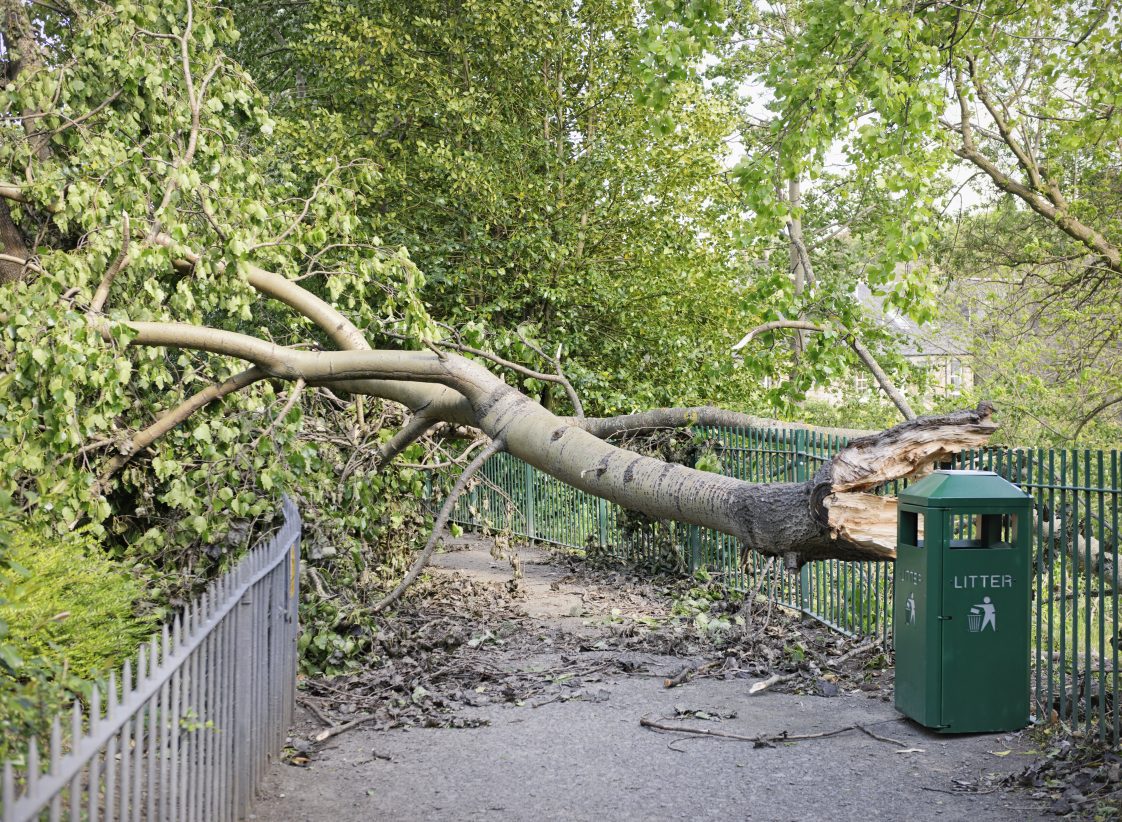Forestry

Effective tree risk management involves understanding the factors contributing to tree failure, assessing potential hazards and consequences, and implementing strategies to reduce risks. These efforts address species-specific traits, environmental conditions, location, and human activity to minimize damage, injuries, and economic impacts. Key components include proactive inspections, maintenance, mitigation measures, community education, and emergency preparedness.
This Extension publication is part of a series discussing hazard trees, risk assessment, and mitigation programs. Specifically, it focuses on the consequences of tree failure and tree risk management and is a valuable resource for decision-makers and policymakers in cities and municipalities, urban foresters, certified arborists, and the public.
Factors Affecting the Consequences of Tree Failure
The outcomes of tree failure depend on various interconnected factors, including the tree’s characteristics, its environment, nearby human activities, and the community’s ability to respond. Understanding these elements is crucial for assessing risks and minimizing potential damages. These factors can be categorized as follows:
Tree-Specific Factors
- Tree Size and Weight. Larger and heavier trees or branches have the potential to cause more extensive property damage, personal injury, or even fatalities when they fail. Their sheer mass can result in significant structural damage or harm to individuals.
- Species Characteristics. Each tree species has distinct properties, such as wood density, growth patterns, ability to compartmentalize decay, and susceptibility to certain stresses. Some species, such as oaks, have strong, dense wood that may resist failure longer, while others, such as willows, are more prone to breakage. However, water oak trees (Quercus nigra) are prone to developing internal decay as they mature, often hollowing out and increasing the likelihood of failure. London plane trees (Platanus × acerifolia) are fast growing with large stem diameters and crowns at maturity, requiring ample space for root growth; otherwise, their vigor diminishes, reducing their mechanical stability.
- Health and Structural Soundness. Trees that are diseased, decayed, or have poor structural integrity (e.g., codominant stems or extensive cavities) could be at a heightened risk of failure, often causing severe consequences.
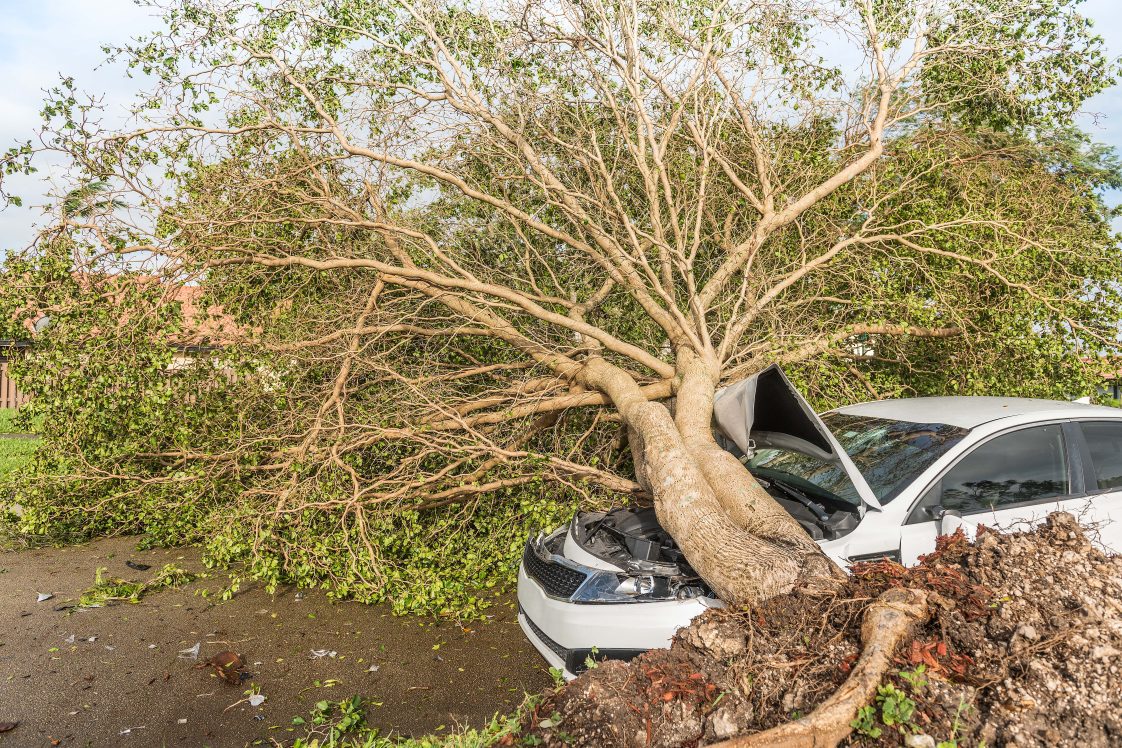
Figure 1. Mature open-grown tree with major codominant stems that fell on a vehicle during a storm.
Location
- Proximity to Structures. Trees near homes, power lines, roads, or other critical infrastructure pose a heightened risk. Their failure can lead to human injuries and fatalities, costly repairs, power outages, or disruptions in daily activities.
- Density of Nearby Vegetation. In areas with dense tree cover, the failure of one tree can create a domino effect, toppling neighboring trees and magnifying the damage. This is particularly common in forested regions. However, nearby trees might also be considered protection, as they can mitigate the fall or even catch a failing tree.
Environmental Factors
- Weather Conditions. Adverse weather, such as strong winds, heavy snowfall, and storms, significantly increase the likelihood of tree failure. Such events may exert forces on trees far beyond their natural tolerance levels.
- Soil Stability. Soil properties, including compaction, drainage, and erosion, influence a tree’s root stability. Waterlogged or eroded soils are more likely to lead to uprooting during adverse conditions.
- Topography. Trees on steep slopes or unstable ground are more prone to falling and may trigger secondary hazards, such as landslides, causing widespread environmental and property damage.
Human Factors
- Population Density. In highly populated urban or suburban areas, a failing tree is more likely to result in injuries or fatalities compared to rural or less populated settings due to the existence of more potential targets and higher occupancy of the potential impact zone.
- Land Use. The level of risk varies depending on the type of area. For example, recreational parks may face less severe consequences compared to busy commercial zones where tree failure could disrupt operations, although human injuries and fatalities might be caused in both areas.
- Activity Timing. Failures during peak activity periods (e.g., daytime) can result in greater harm due to the higher presence of people and vehicles.
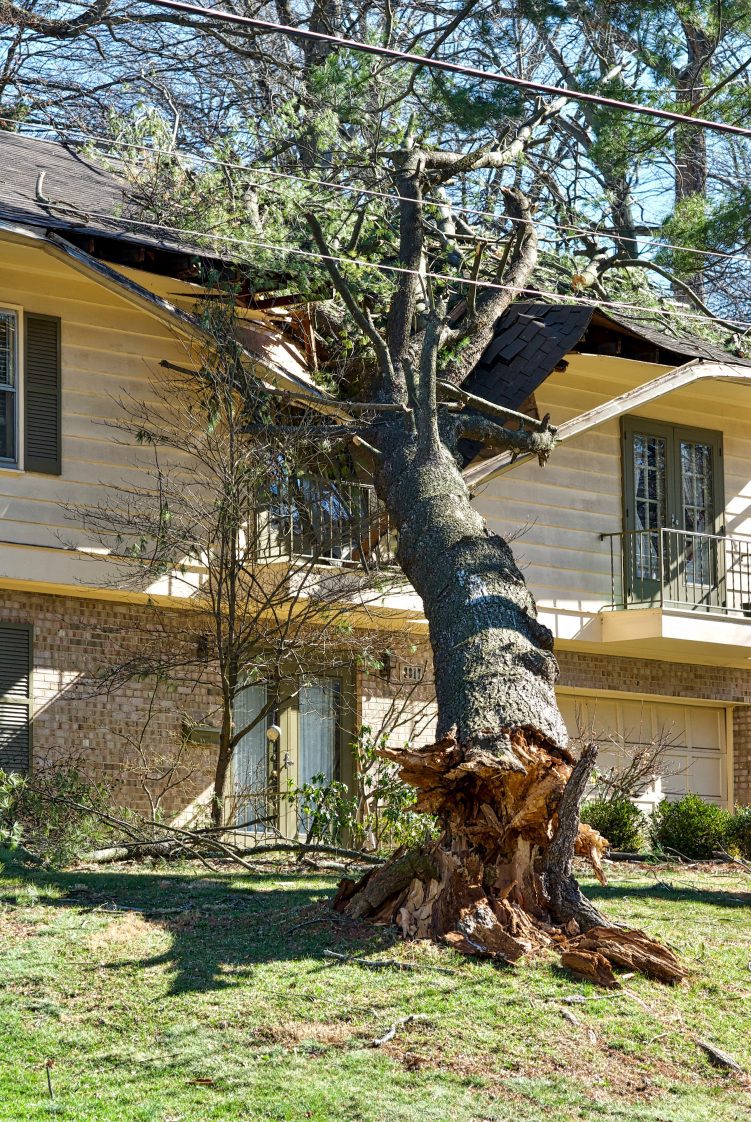
Figure 2. Mature open-grown tree with potential internal decay that fell on a home’s roof.
Economic Factors
- Damage and Repair Costs. Fallen trees can cause costly damage to buildings, vehicles, and infrastructure, often requiring significant financial resources for cleanup and restoration.
- Service and Business Interruptions. Tree failures may obstruct transportation, disrupt power supplies, and halt business activities, resulting in direct and indirect economic losses.
- Property Value Impact. Trees often enhance property aesthetics and market value. Their loss, especially in high-value landscapes, can have important economic implications.
Emergency Response and Preparedness
- Availability of Emergency Services and Community Preparedness. Quick response times from emergency personnel and arborists can reduce the damage caused by tree failures. Furthermore, communities equipped with emergency plans, resources, and trained personnel can mitigate risks and ensure faster recovery.
Managing Tree Risk
Tree risk management entails identifying and addressing hazards associated with trees to minimize the risk of failure and damage, injury, or loss of life. A robust management strategy involves the following:
Assessment
Professional arborists or tree risk assessors evaluate trees for potential hazards. This assessment considers factors such as the tree’s species, age, structural defects, occupancy rate of a particular site, and proximity to high-risk targets, such as buildings or roads. Environmental factors, such as soil conditions and weather patterns, are also included in the evaluation.
Identifying Indicators of Hazards
Indicators of hazards range from structural defects, such as dead or decaying branches, to cracks, significant stem leaning, root defects, stem cavities, and internal wood decay. These issues are typically identified through visual inspections or advanced diagnostic tools, depending on the level of risk assessment required.
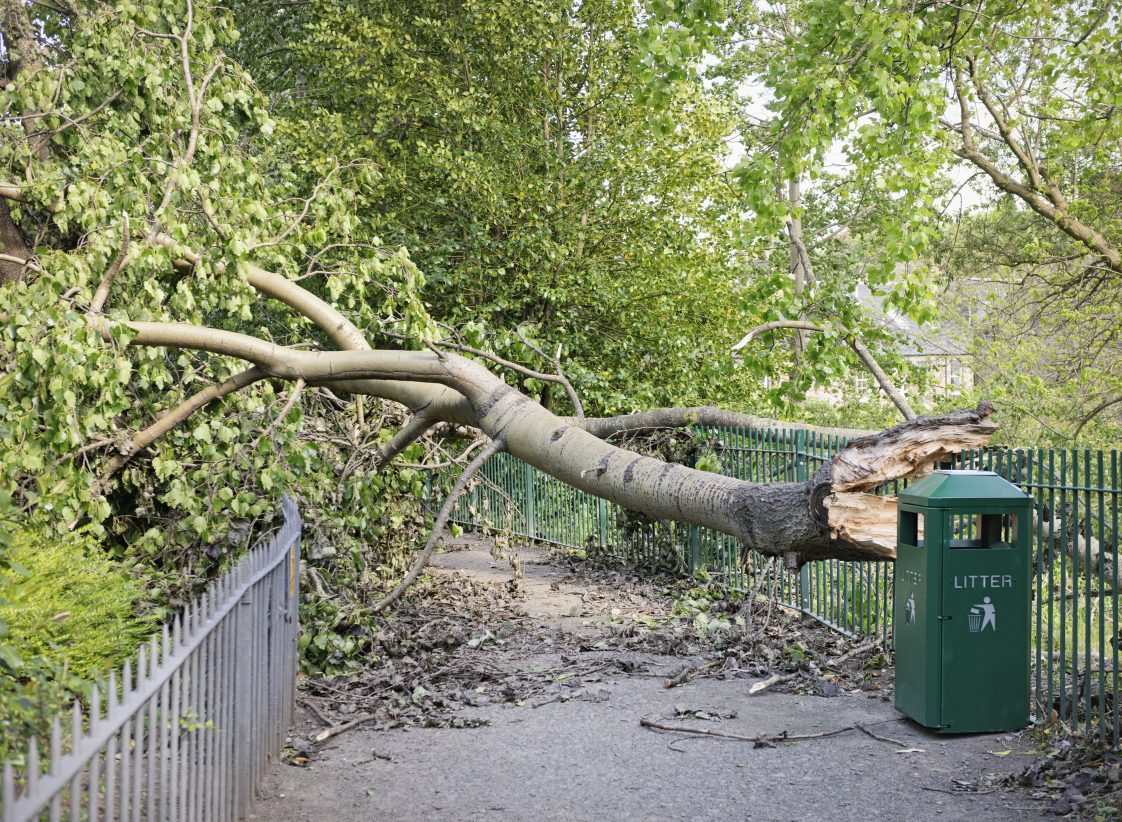
Figure 3. Tree failure in recreational parks may cause less severe consequences compared to busy commercial zones where traffic is high and occupancy by people is constant.
Risk Evaluation
Once hazards are identified, the likelihood of failure and the potential severity of the resulting consequences are assessed. This involves analyzing the tree’s environment, nearby human activity, and the potential damage to people, structures, or vehicles.
Mitigation Strategies
After assessing the risks, mitigation measures can be implemented. The goal is to reduce the consequences and likelihood of failure. Mitigation strategies must be sufficient to lower the potential risk to a level acceptable to the tree manager or owner to be considered successful.
- Pruning. Removes weak, diseased, or dead branches to minimize risks.
- Structural Support. Installing cables or braces to reinforce weak areas of a tree.
- Removal. When the risk is too high and cannot be mitigated through other methods, tree removal may be necessary.
- Environmental Management. Improving soil conditions, drainage, and root protection to enhance tree stability.
- Target Management. Potential targets can be managed to mitigate risks, such as moving them to a different location, if possible.
Monitoring and Maintenance
Trees require regular, periodic monitoring to detect changes in condition and ensure ongoing safety. Routine maintenance, such as pruning and soil management, can prevent potential hazards from escalating.
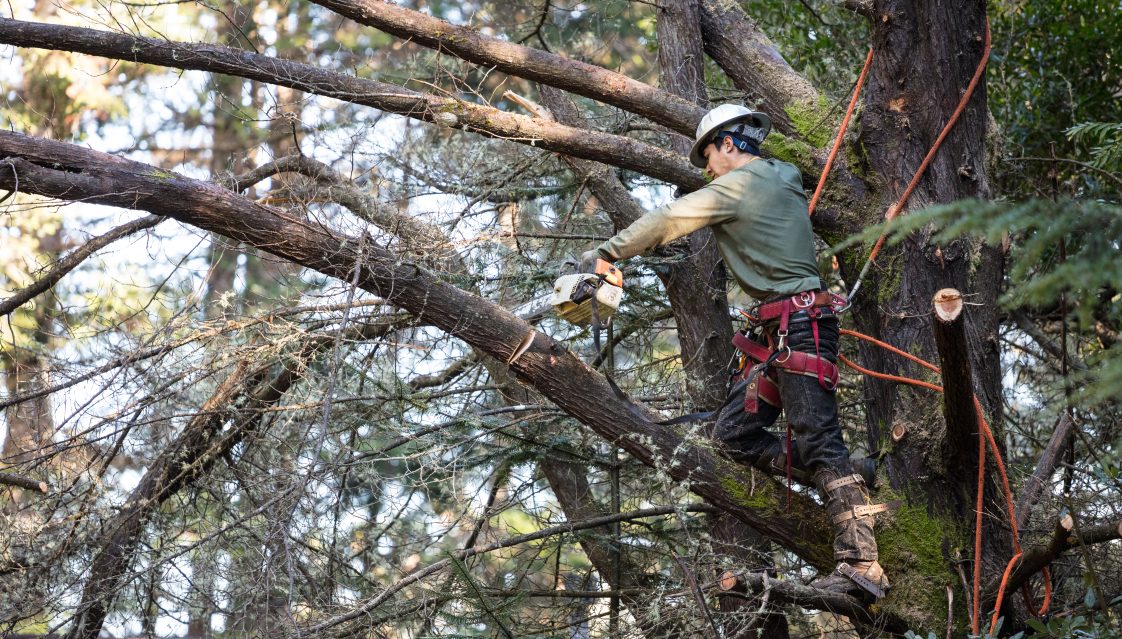
Figure 4: Arborists can remove weak, diseased, or dead branches to minimize risks. Arborists often perform reduction pruning by reducing the size of large branches and stems to reduce the mechanical loads they face.
Community Awareness
Educating the public about tree safety fosters collaboration and encourages early reporting of tree risks. Effective communication helps build trust and shared responsibility for tree management.
Despite these efforts, some level of residual risk may remain. Complete elimination of risk often requires tree removal, but this should be a last resort due to the environmental and aesthetic benefits of trees. Residual risks should be communicated clearly to tree owners or managers, enabling informed decisions about acceptable levels of risk.
Conclusions
Managing tree-related risks is a multifaceted process that requires understanding the factors influencing tree failure, assessing potential hazards, and implementing appropriate mitigation strategies. The interplay of tree-specific characteristics, environmental conditions, location, and human activity determines the potential consequences of tree failure, including property damage, injuries, and economic impacts. A comprehensive approach to tree risk management—encompassing regular inspections, targeted interventions, community education, and emergency preparedness—ensures both public safety and the preservation of the many benefits trees provide. While complete risk elimination is impossible, balancing proactive and reactive measures, alongside clear communication about residual risks, allows for informed decisions that protect people, property, and the environment while maintaining the invaluable role of trees in our landscapes.
Suggested Literature
- A Photographic Guide to the Evaluation of Hazard Trees in Urban Areas, 2nd Edition by Nelda P. Matheny and James R. Clark.
- Arborists’ Certification Study Guide, 4th Edition. Copyright © 2022 by International Society of Arboriculture.
 Georgios Arseniou, Extension Specialist, Assistant Professor, Forestry, Wildlife, and Natural Resources, Auburn University
Georgios Arseniou, Extension Specialist, Assistant Professor, Forestry, Wildlife, and Natural Resources, Auburn University
New April 2025, Tree Risk Management: Mitigating Consequences & Enhancing Safety, FOR-2174

